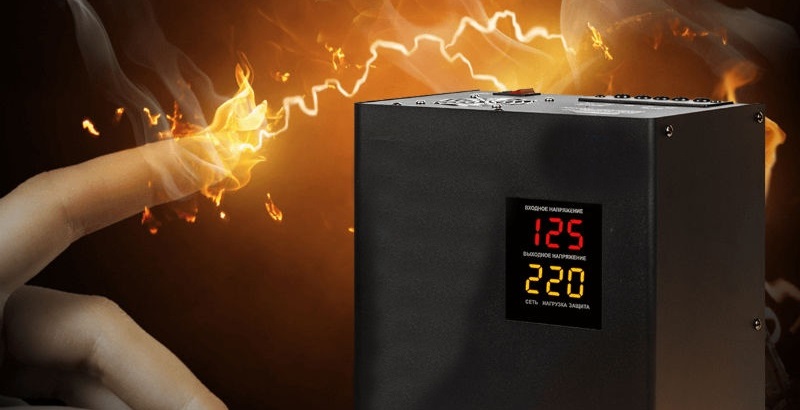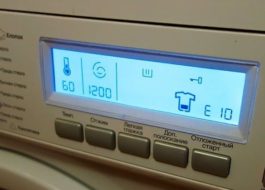Error E10 in Hansa washing machine
 Modern machines are equipped with a self-diagnosis system for emerging problems. Washing machines constantly monitor the condition of components and sensors, recording all suspicious changes in their operation, and if a failure occurs, they display the corresponding error on the display. The Hansa washing machine can also conduct “self-analysis”. The Hansa database contains dozens of different fault codes, one of them is “E10”. We suggest you get to know it better, find out the reasons for the error and how to eliminate it.
Modern machines are equipped with a self-diagnosis system for emerging problems. Washing machines constantly monitor the condition of components and sensors, recording all suspicious changes in their operation, and if a failure occurs, they display the corresponding error on the display. The Hansa washing machine can also conduct “self-analysis”. The Hansa database contains dozens of different fault codes, one of them is “E10”. We suggest you get to know it better, find out the reasons for the error and how to eliminate it.
Moments when the error occurs
The peculiarity of the E10 error code on the Hansa washing machine is that it can appear at different stages of the cycle. The cause of the failure depends on the moment the self-diagnosis system is triggered. Thus, the machine can report a problem at four stages of equipment operation.
- When the cycle starts. In this case, Hansa displays error E10 immediately after the electronic sunroof lock is activated and the “Start” button is pressed.
- After collecting water. The second option is that the error appears as soon as the machine has completely filled the tank.
Error code “E10” on Hansa washing machines appears when starting a cycle, after drawing water, starting heating or spinning.
- When heating starts. Soon after the wash starts, the heating element begins to heat up, to which the washer responds with “E10” and stops the cycle. It’s interesting that when you turn on the low-temperature program, the machine does not generate an error.
- When switching to spin. The washing machine tries to spin the drum after rinsing, but only picks up 600-800 revolutions, and then abruptly stops and shows “E10” on the display.

The procedure for further diagnostics and the nature of the repair depend on the moment the code appears.The easiest way to act is when the error appears at the very beginning of the cycle. It is more difficult if the washing machine has already filled the drum - you will have to manually drain the water first. In any case, it is necessary to understand in advance how “E10” stands for and for what reasons it occurs.
Let's decipher the error
According to the Hansa factory instructions, the code “E10” stands for “power supply problems”. In simple words, sensors-catchers specially provided in the system recorded a sharp decrease or increase in voltage in the electrical network. Sensitive to surges, the electronics “responds” to interference by turning off the power for safety reasons.
Error code "E10" indicates problems with the power supply, external or internal.
Code “E10” is most often displayed on modern Hansa washing machines. Previously, more stable working machines were produced that washed normally at voltages from 175V to 270V. Even with sudden surges, the equipment continued washing without stopping the system.
For the last 5-7 years, washing machines have been equipped with surge protectors that are quite vulnerable to surges, due to which the units often turn off and freeze. Modern washing machines, which are more sensitive to voltage surges, periodically “delight” E10 users. Especially when operating equipment in sparsely populated areas.
Possible causes of the error
What to do to correct the “E10” error depends on the cause of its occurrence. Most often, the problem occurs due to a power failure - short-term or long-term. So, problems with power supply appear if:
- the socket is faulty (burnt out, contacts melted);
- a sharp voltage surge was recorded;
- critically low or high voltage remains in the electrical network for a long time;
- the extension cord used for connection is broken or cannot cope with the load;
- The voltage control system in the control board has failed.

By the way, manufacturers of washing equipment, including Hansa, recommend not using extension cords and tees. It is safer to allocate a separate power socket of appropriate power for the machine in order to eliminate “middlemen”. Experts also advise connecting the machine via special stabilizer – with it, the unit will always operate in a suitable power supply range.
If problems with the voltage supply can be short-term and go away without repair by the user, then with a faulty socket, a broken circuit board and an unsuitable extension cord, the situation is more complicated. Especially if the control module fails. This happens rarely and is difficult to diagnose: sometimes only one microelement short-circuits. If such a failure is ignored, more serious breakdowns occur: a track or triac burns out, and sometimes the unit itself burns out.
How to get rid of the problem?
Don't immediately think about the worst. The control board breaks down extremely rarely; more often it is much easier to fix the “E10” error. In most cases, problems that can be resolved without repairs and lengthy diagnostics lead to failure. To make a “diagnosis” of Hansa and begin “treatment”, you will have to consistently check all possible breakdowns, starting from the simplest.
First of all, we check whether the error will repeat a second time. It is possible that there was a short-term technical glitch. To diagnose, just restart the machine and assess the condition of the equipment. We proceed like this:
- turn off Hansa by clicking the corresponding button;
- unplug the power cord from the outlet;

- wait 10-15 minutes;
- reconnect the washing machine to the network by inserting the cord into the outlet and pressing “On”;
- run a quick wash;
- We look at the behavior of the machine.
If, after rebooting, Hansa did not generate an error at the same point in the cycle, then the failure was short-lived and does not require further diagnostics. Otherwise, you will have to immediately determine the cause of E10. You cannot continue trying to reset the code - you can aggravate the situation, even to the point of death.
The second step is to check the electrical network. Ideally, you should call a qualified electrician, but if you have experience, you can do it yourself. The main thing is to follow safety precautions and be extremely careful. If the power supply to the house is unstable and voltage surges occur constantly, then it is better to include a stabilizer in the circuit.
The third stage is checking the outlet and extension cord. Here, signs of a breakdown will be obvious: burnt out wiring, melted insulation, a burning smell, dark spots. If there are no suspicious “symptoms”, we move on to practice: we connect a working device to the electrical network or remove the “adapter” from the circuit. Works? Then the problem is found. If checking the electrical network does not reveal any problems, then the problem is an internal failure - the control board has failed. Here, amateurish work is dangerous: you need to contact a service center for professional diagnostics and repairs.
Interesting:
Reader comments
- Share your opinion - leave a comment





















Add a comment